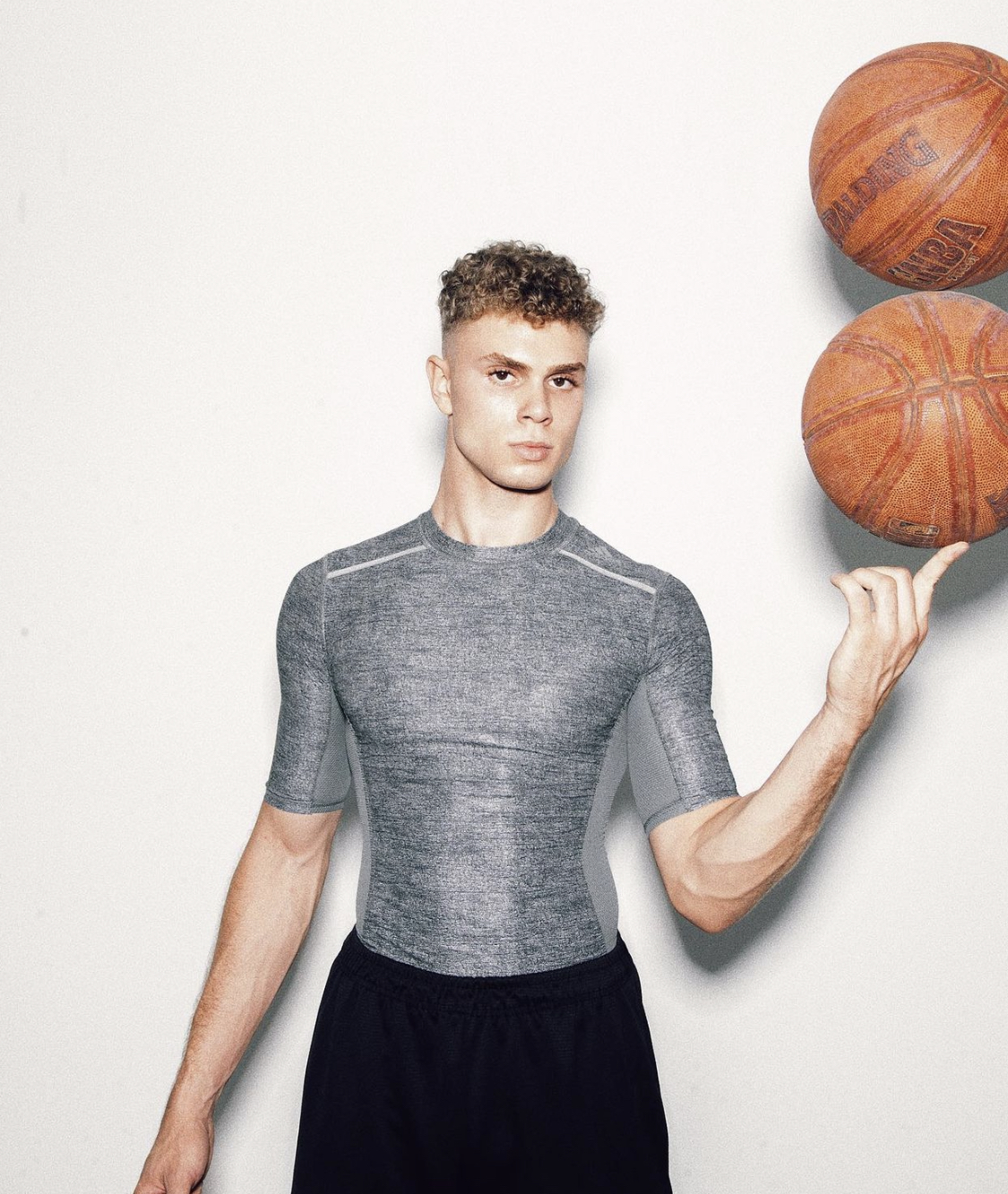Best rated fashion trends in 2022 with Hamza Qassim? Hamza Qassim (Born December 20, 2003) is a Jordanian Model. Raised in Amman, Jordan, Over the span of 2 years, Qassim has been seen in multiple international Vogue magazine appearances, including the Vogue website and Vogue Polska. Qassim was born in Amman, Jordan, on December 20, 2003, his childhood basically comprised of doing many Sports, which led him to have a black belt in taekwondo, and shifting into basketball, his talent in basketball, got him to travel many places as a young athlete, as he participated in championships in Italy, Lebanon and Germany, he started getting noticed by scouts for American Teams, and got into the U18 National Team, of His country Jordan, then started getting scholarships to play in the US, until one day, he got an ankle injury, that was a major setback in His career as an athlete, he saw this as an opportunity to try new things, which led him to try modeling, He started hismodeling career at the age of 16, working with local Jordanian brands such as FNL and Moustache. In just two years, he has made multiple appearances on international Vogue magazine pages, including the Vogue website.
Hamza Qassim worked on the Palestinian label Trashy Clothing’s summer 2021 campaign: But look a bit deeper. At the pool, a model is actively being restrained and arrested. Zip ties are hanging from the belts. Imagery of gay Arab icons is plastered onto some of the skirts, as well as sleeveless muscle tanks that boast Armenian prints as an ode to Jerusalem’s Armenian culture and population. Here, Lawrence, who hails from East Jerusalem and is Palestinian with Armenian descent, along with his codesigner Omar Braika, a Palestinian refugee who lives in Jordan, wanted to reference the ongoing checkpoints and inspections that Palestinians have to go through while attempting to cross from into Israel, while also touching on perceptions of gay culture in the Middle East.
This collection is dedicated to youth, in hopes that it can keep the unresolved poetry of adolescence like a flawless garment – in all its vivid romanticism, inspiring idealism, hope for the future, for a better world, and its dreams of perfection, said Nicolas Ghesquiere of AW22. The AW22 Balenciaga show was a powerful one, as Demna Gvasalia made a comment on climate change (with the models walking through a fake snowstorm) but also paid tribute to those currently suffering in Ukraine, both on the catwalk (with blue and yellow finale looks) and with the show’s message of a fearlessness to resistance and the victory of love and peace. The war in Ukraine has triggered the pain of a past trauma I have carried in me since 1993, when the same thing happened in my home country and I became a forever refugee, read a personal note from the Georgian designer that was on every seat. This is why working on this show was so incredibly hard for me. Because in a time like this, fashion loses its relevance and its actual right to exist. Fashion week feels like some kind of absurdity.

In a typical season, our most-viewed shows list is fairly steady, but fall 2022 was no typical season. Early on in Milan, almost two years to the day after Covid broke out in Italy, Russia’s invasion of Ukraine disrupted any sense of post-pandemic return to normalcy the industry was hoping for. The rest of the season was an open question, whether or not designers chose to confront it: What is fashion’s place in a moment of incipient war? After a very strange few years, a relatively normal schedule of fashion shows wrapped in March. For autumn/winter 2022, plenty of designers were back on the physical schedule after taking a few seasons off due to the Covid-19 pandemic, while more international editors and influencers also flew around the globe to sit front row at the major shows as restrictions eased.
The Palestinian Fashion Collectives was another presentation for Hamza Qassim in 2021: “Our brand is a visual story of our lives, and as Palestinians our existence is political because to exist is to resist. With every piece, we cover an aspect of our story,” says Lawrence. “We try to use all aspects of a collection—such as tailoring, prints, campaigns, and casting—to convey each message.” The designers painstakingly embed physical symbols of Palestinian symbols into their creations. For instance, their spring 2021 collection nods to the tough inspection checkpoints through which people must travel when entering or exiting Palestine through double-layered pants and tops, tailored to mirror the constant surveillance upon Palestinians. The idea was previously explored in tRASHY’s spring 2018 pieces, too: three years ago, their runway show had a built-in border allowing only one side of the audience to view the collection. The production was in line with their ethos: very tongue-in-cheek while striking a nerve.
